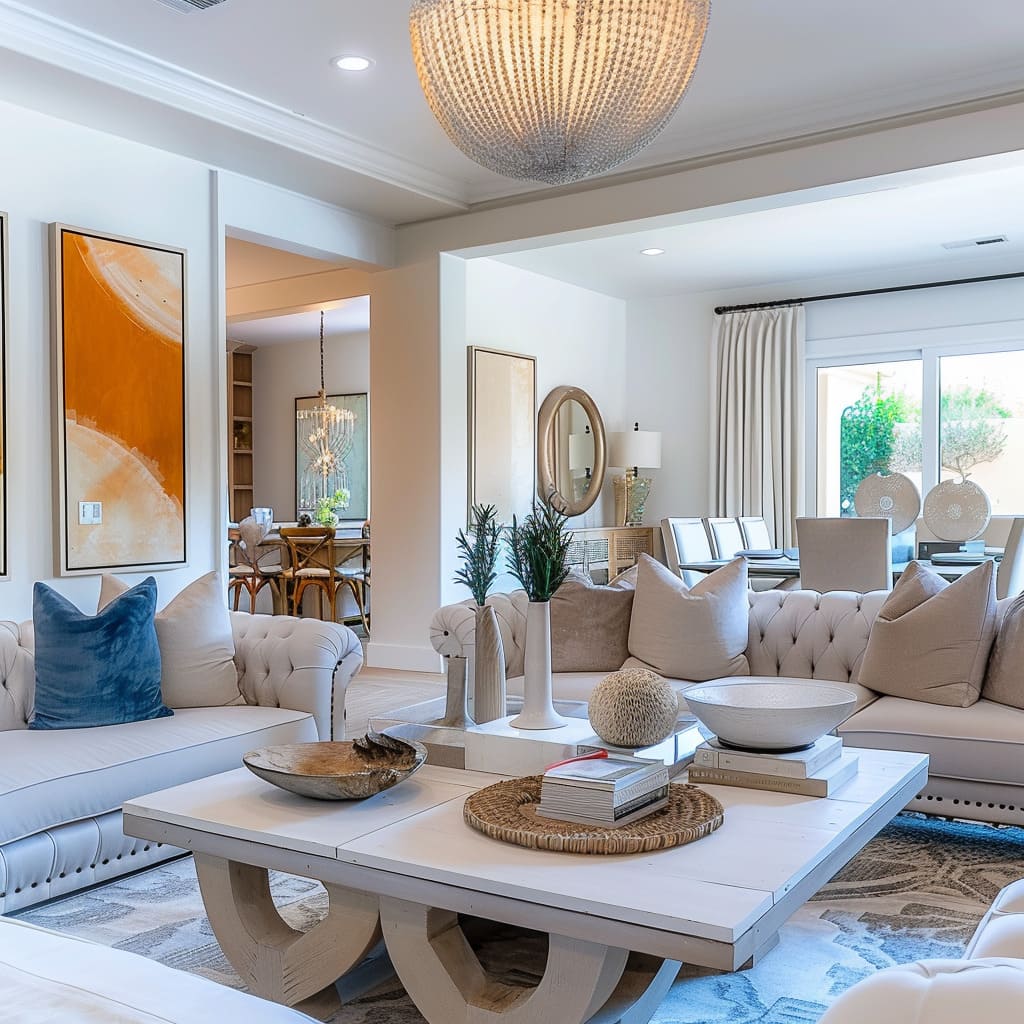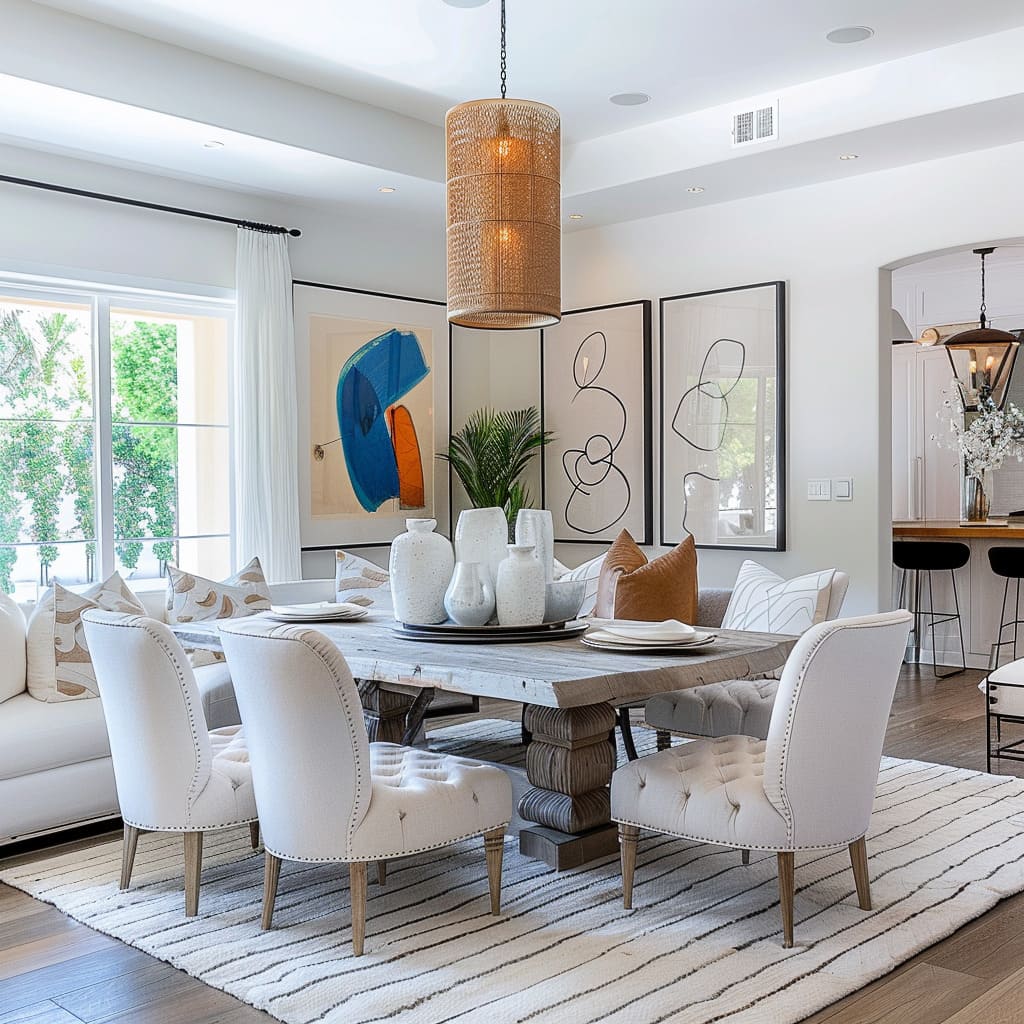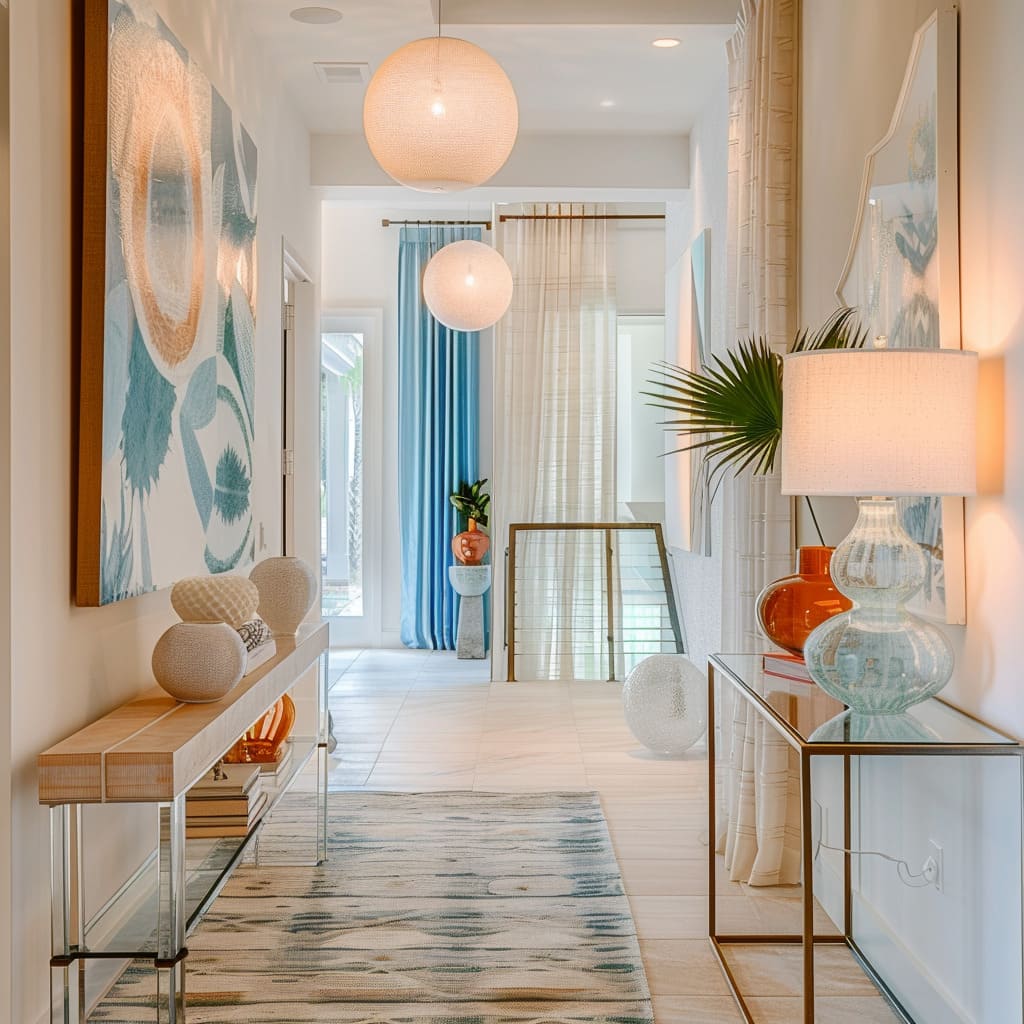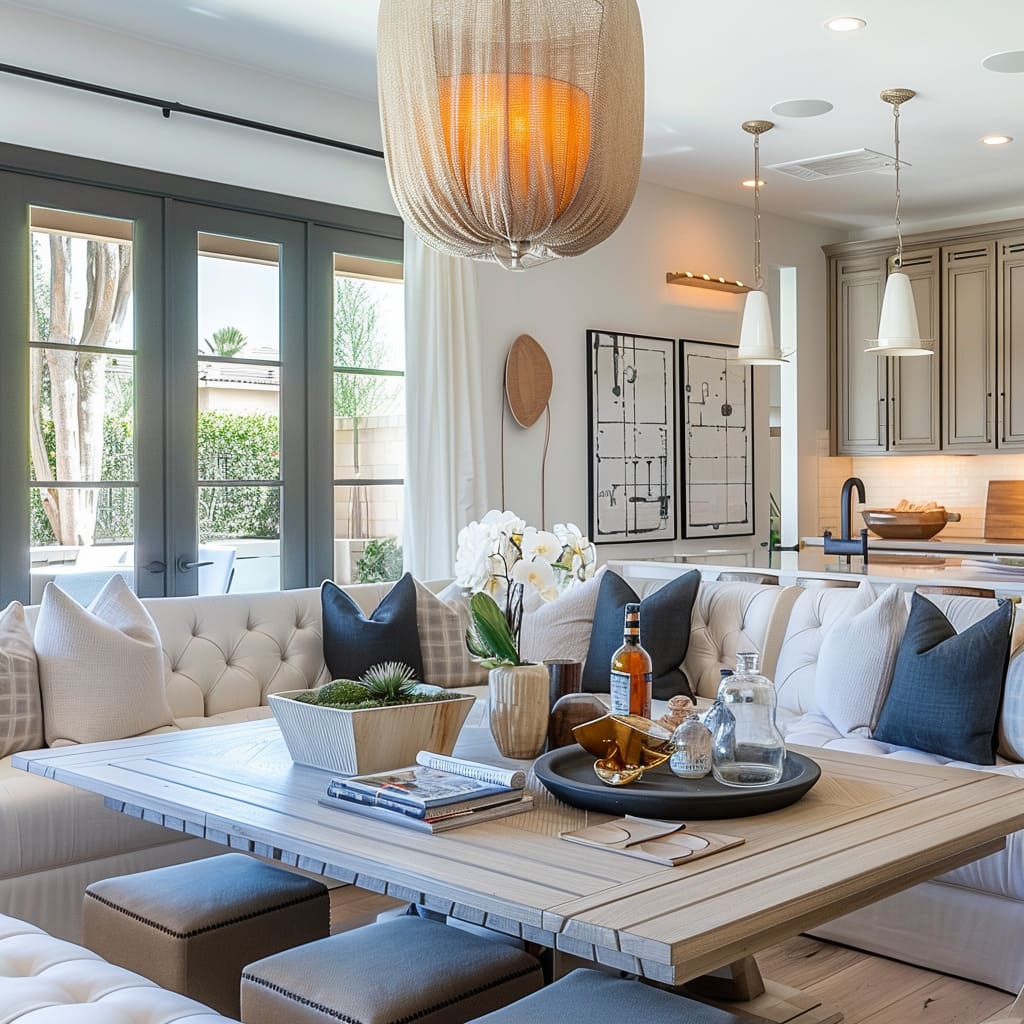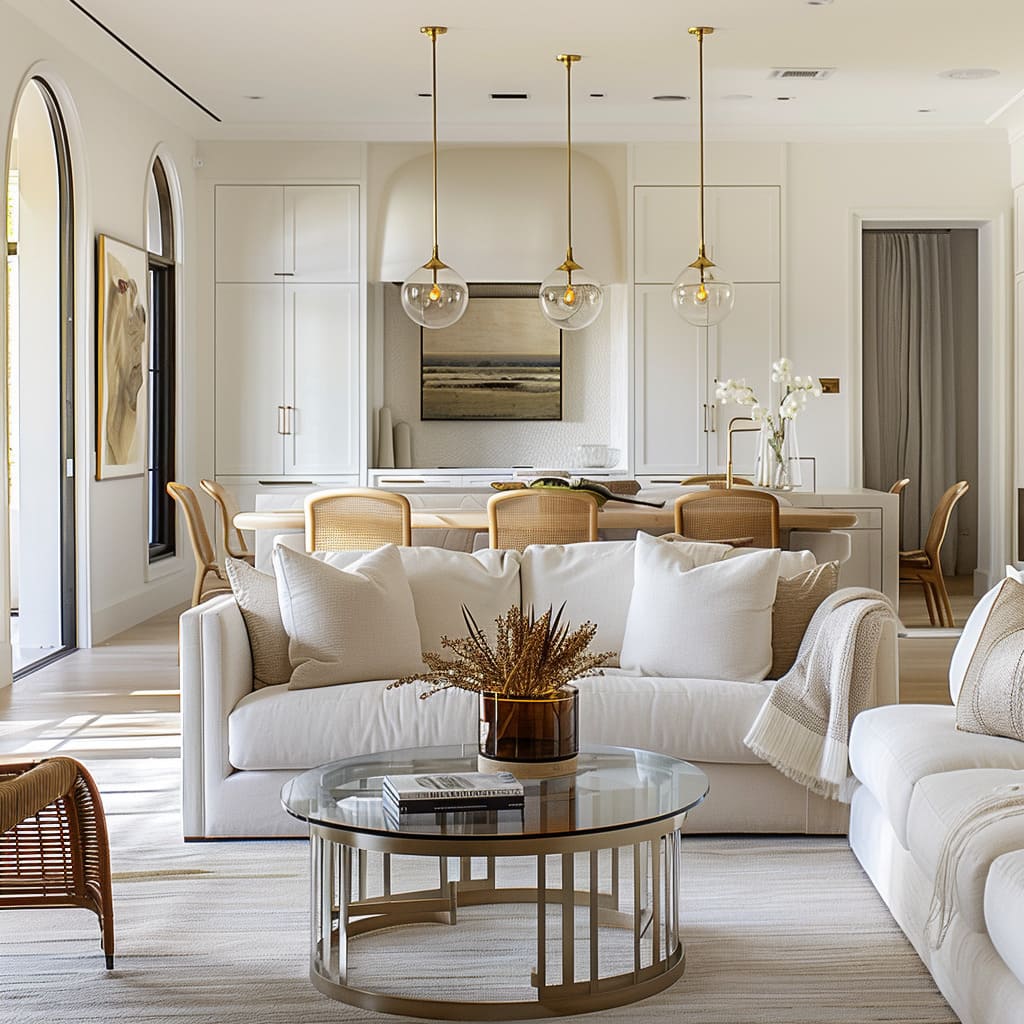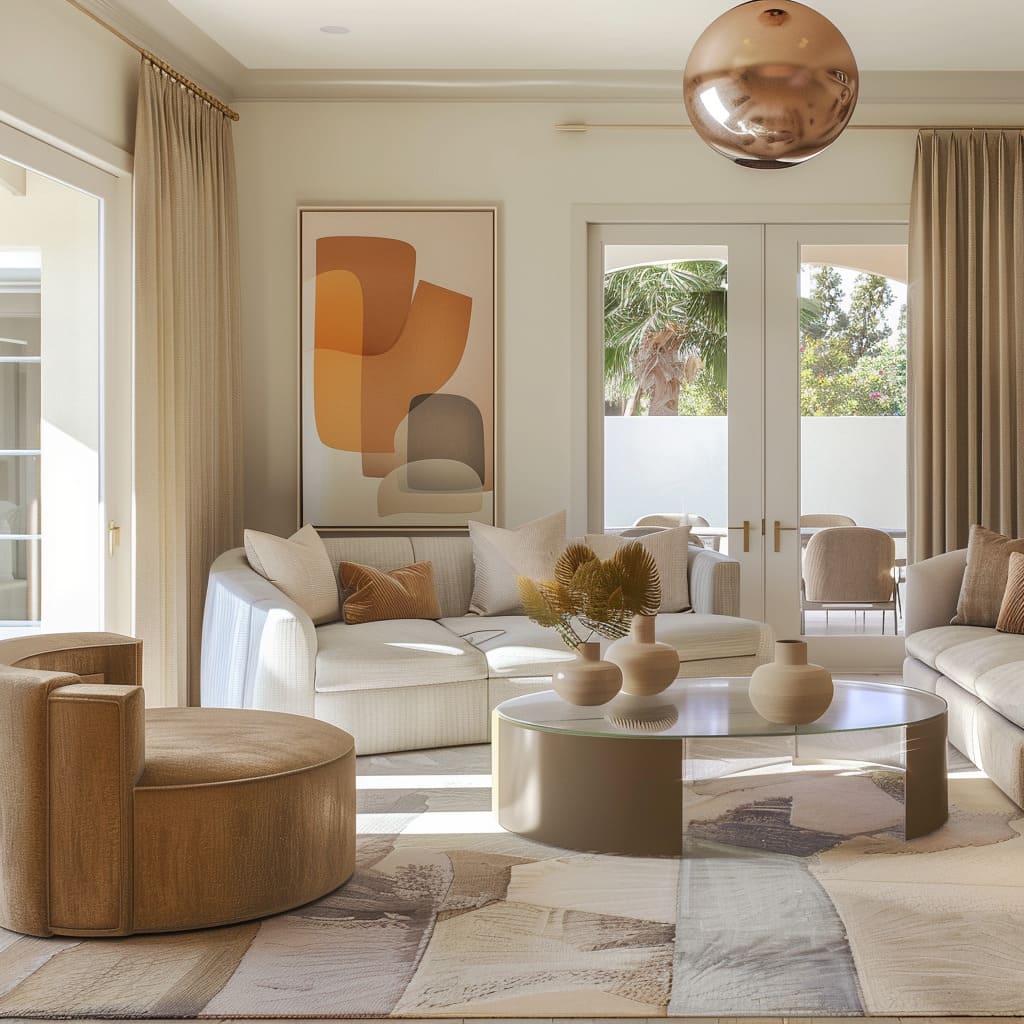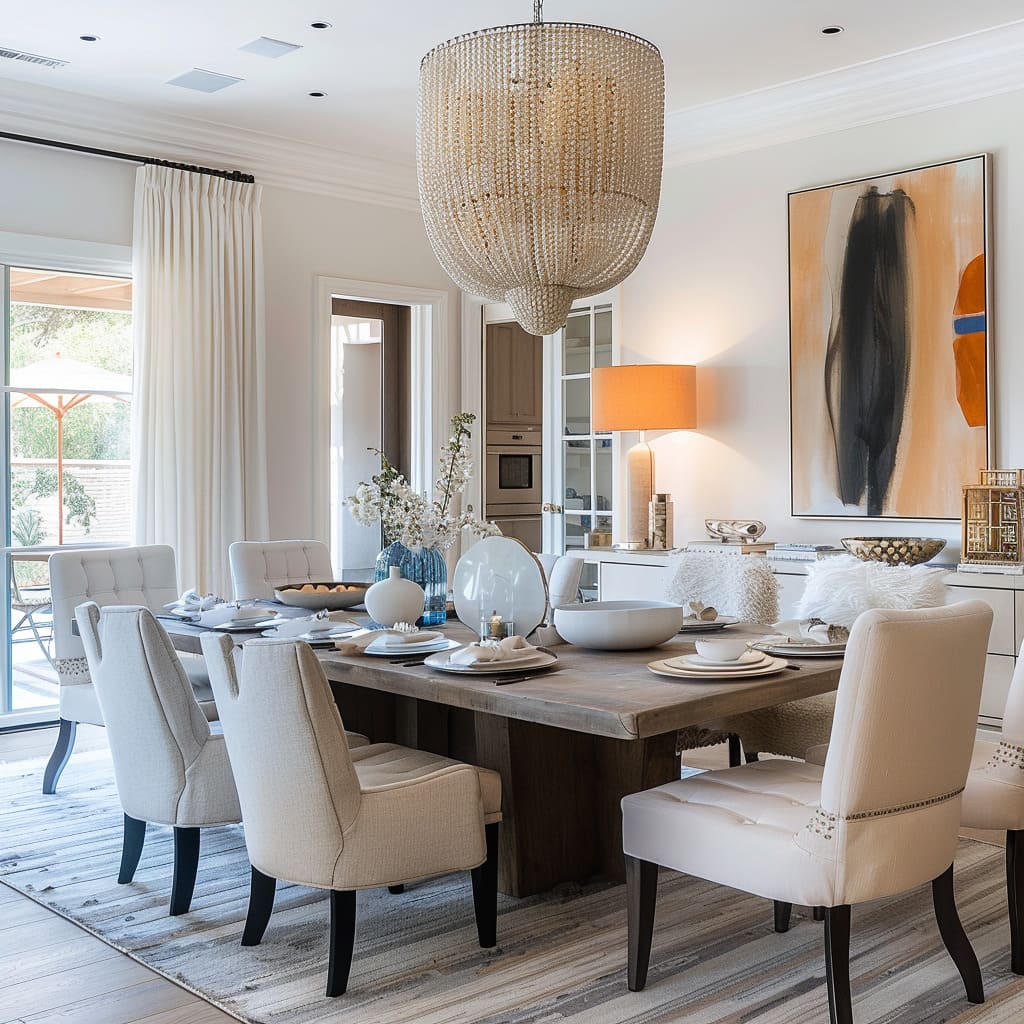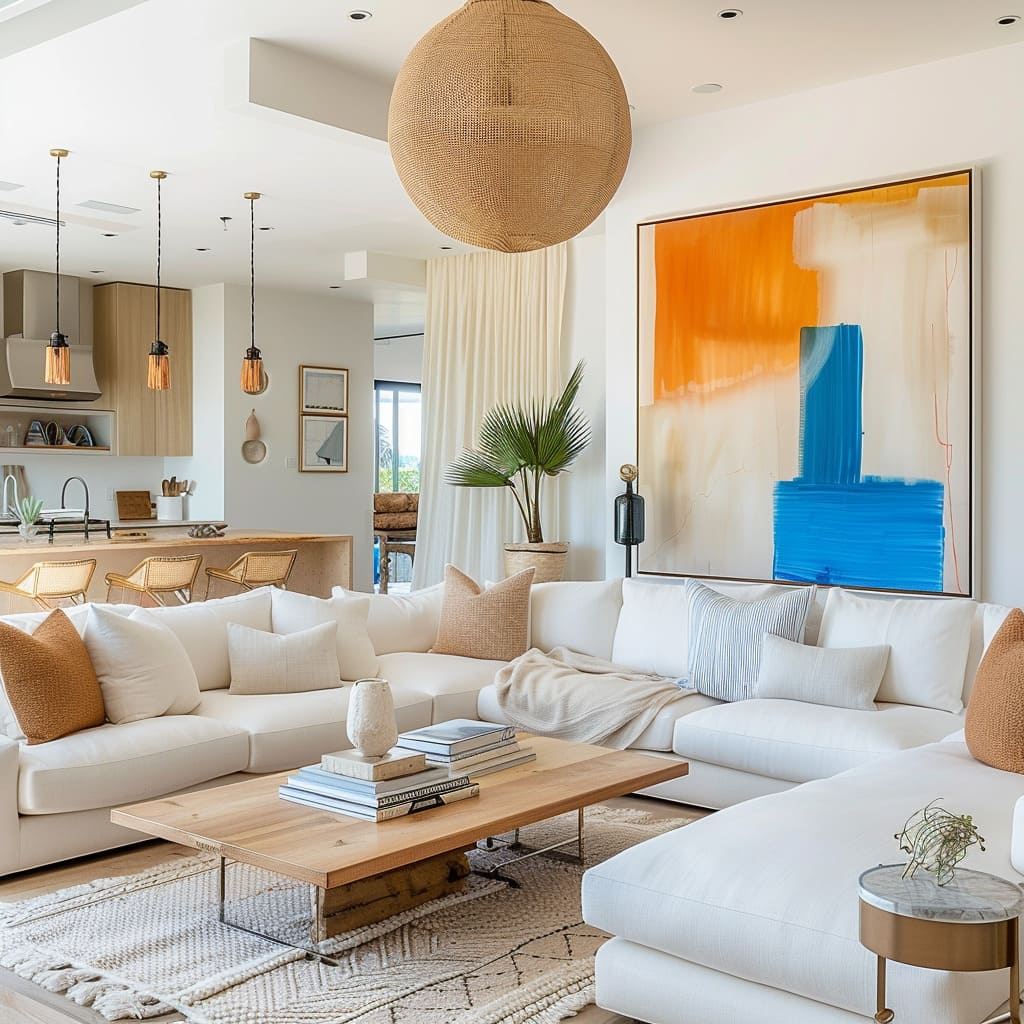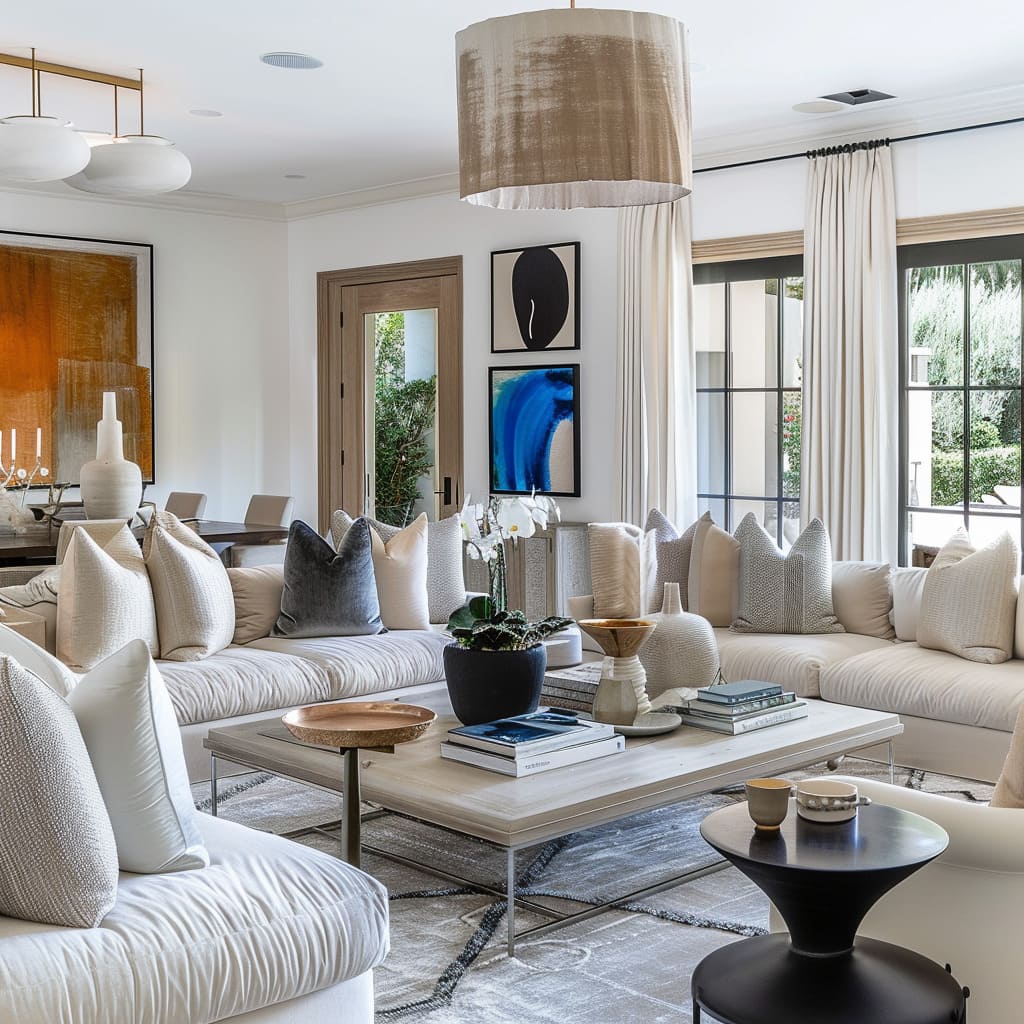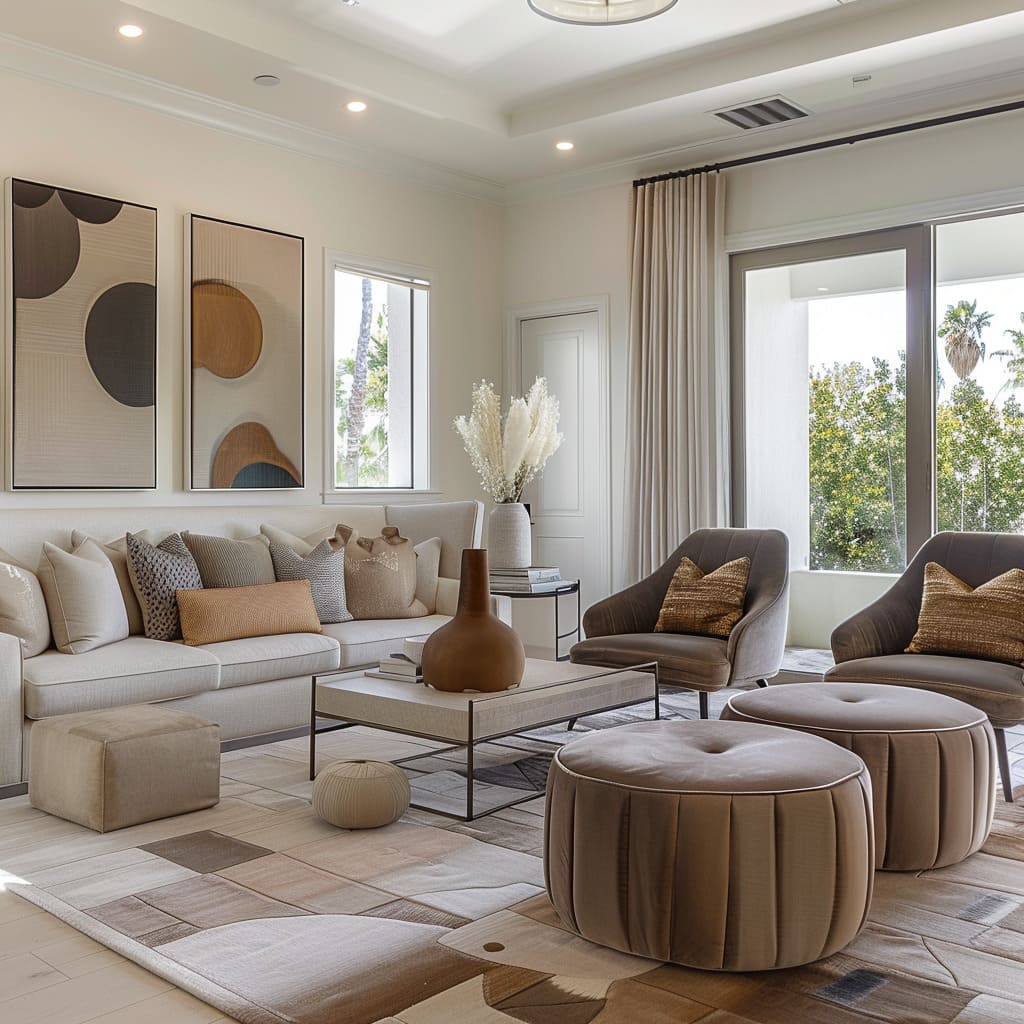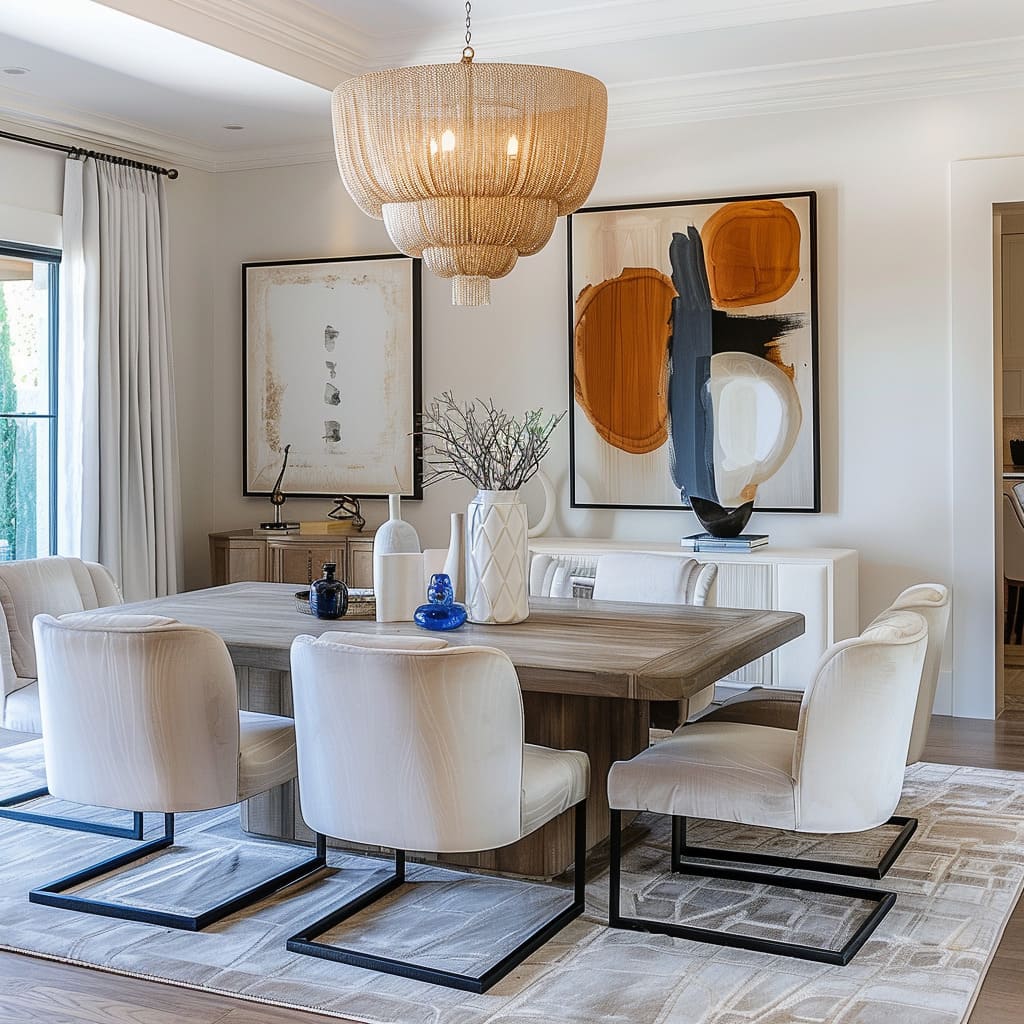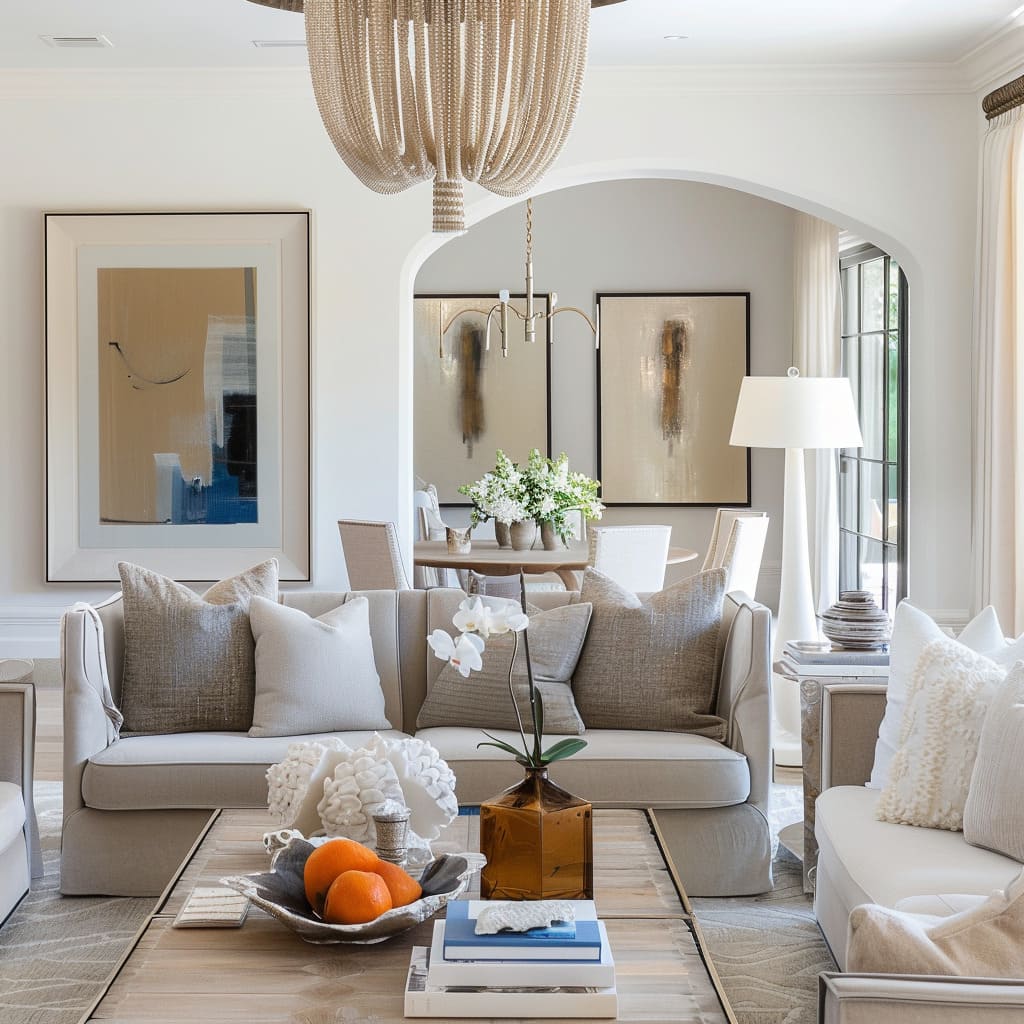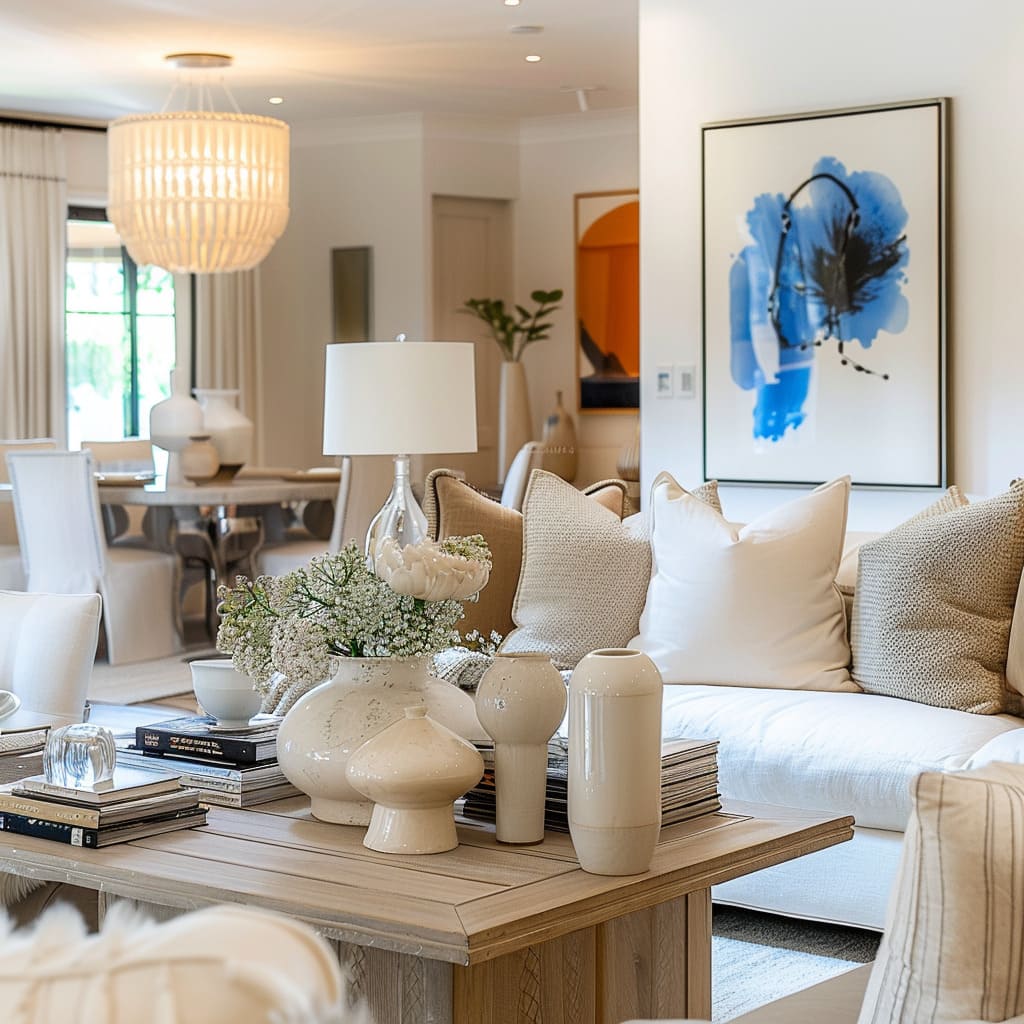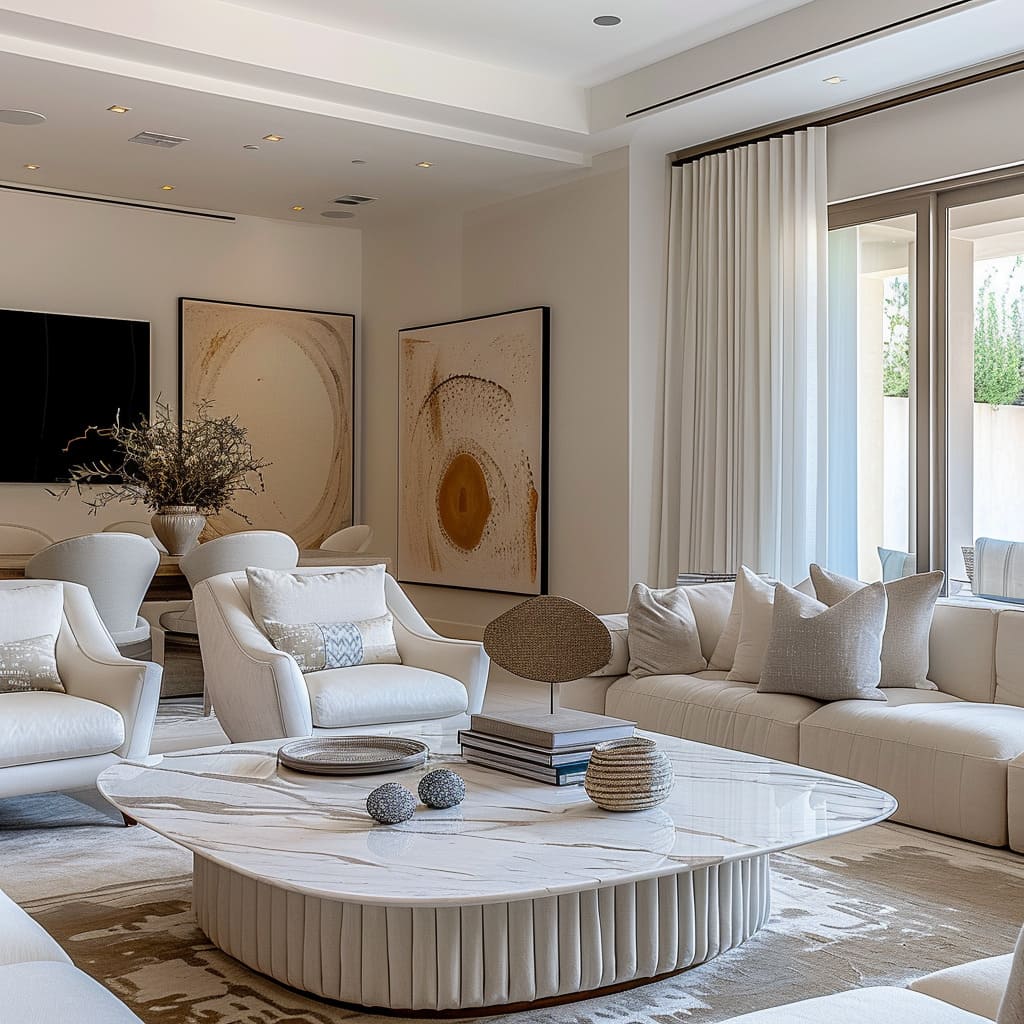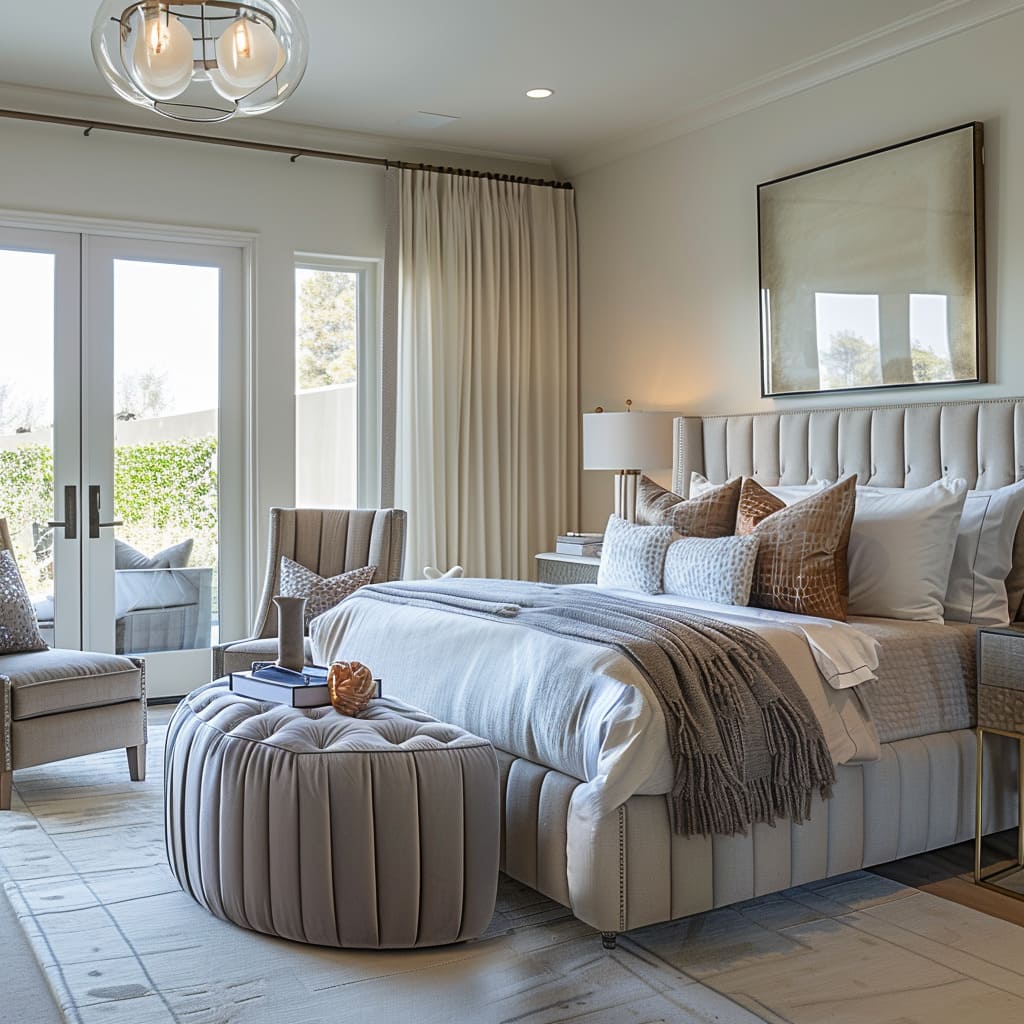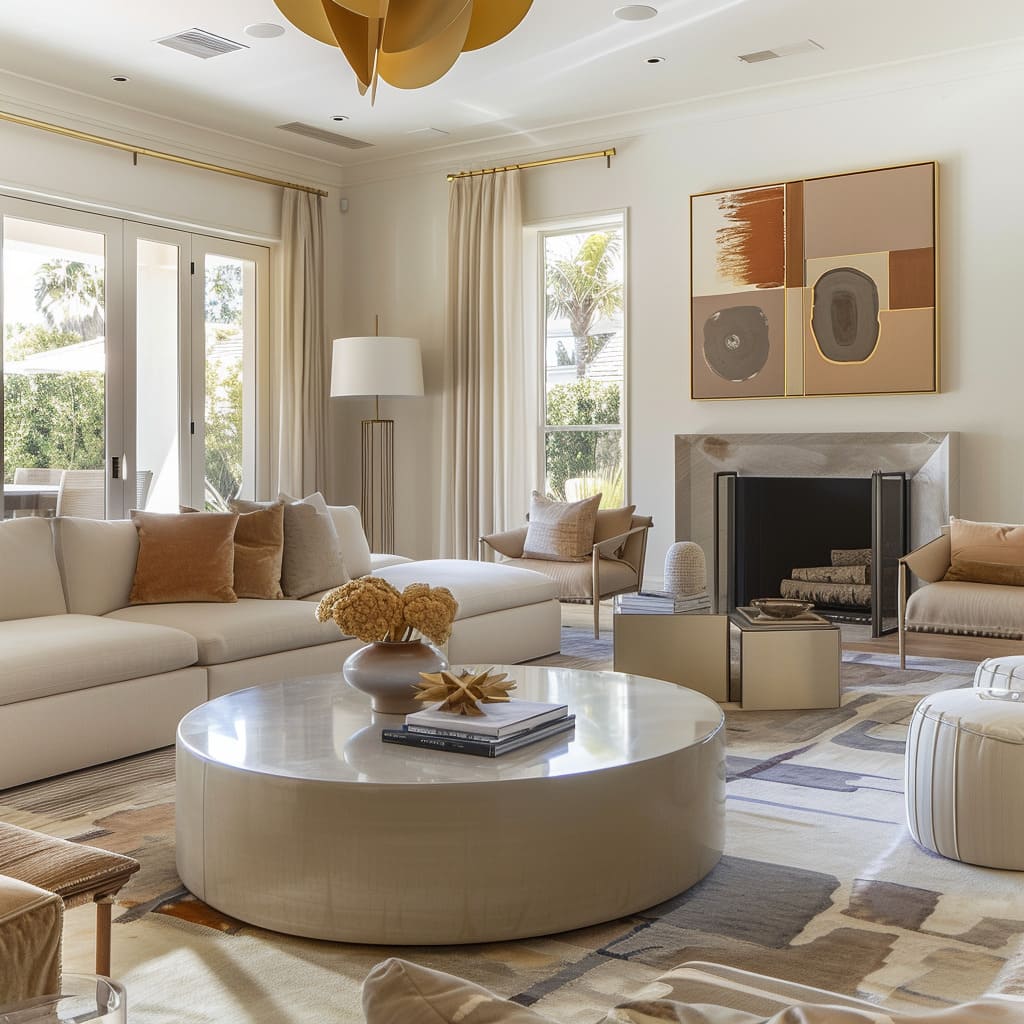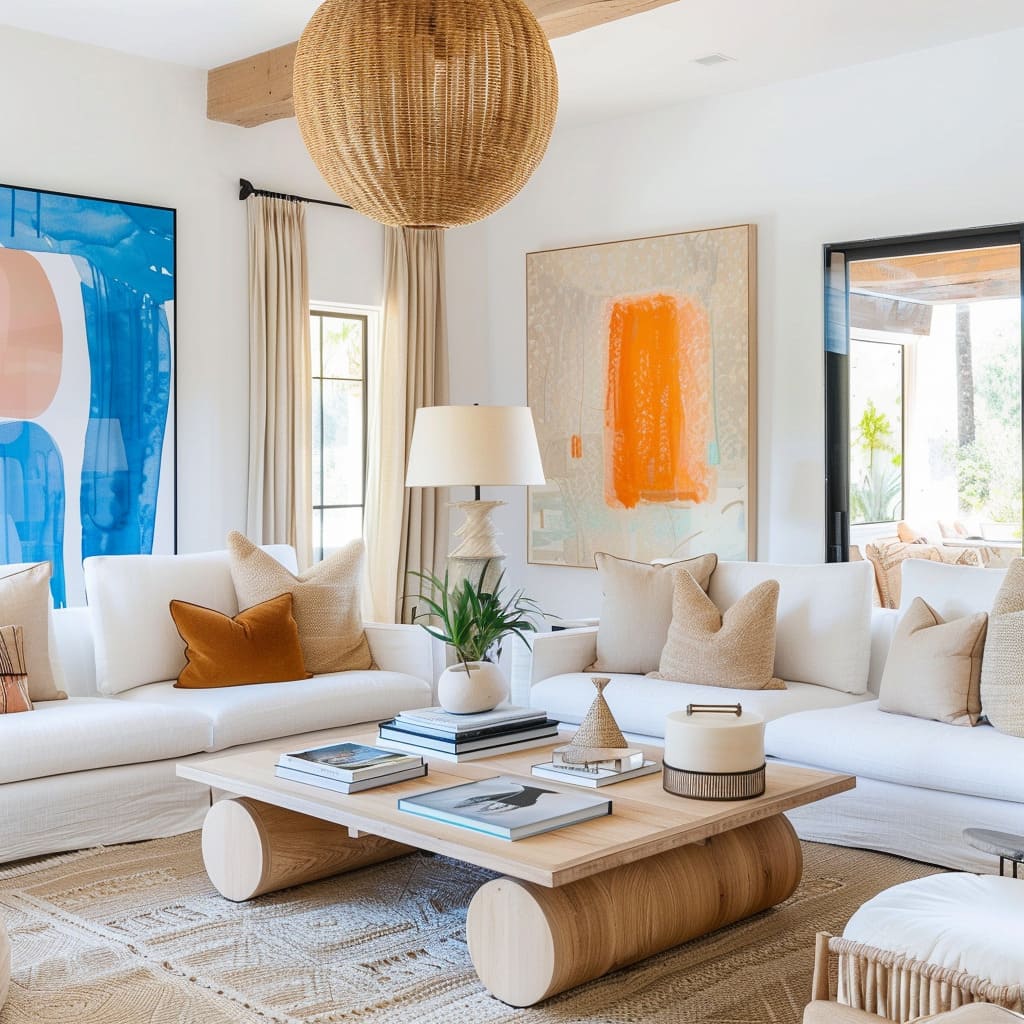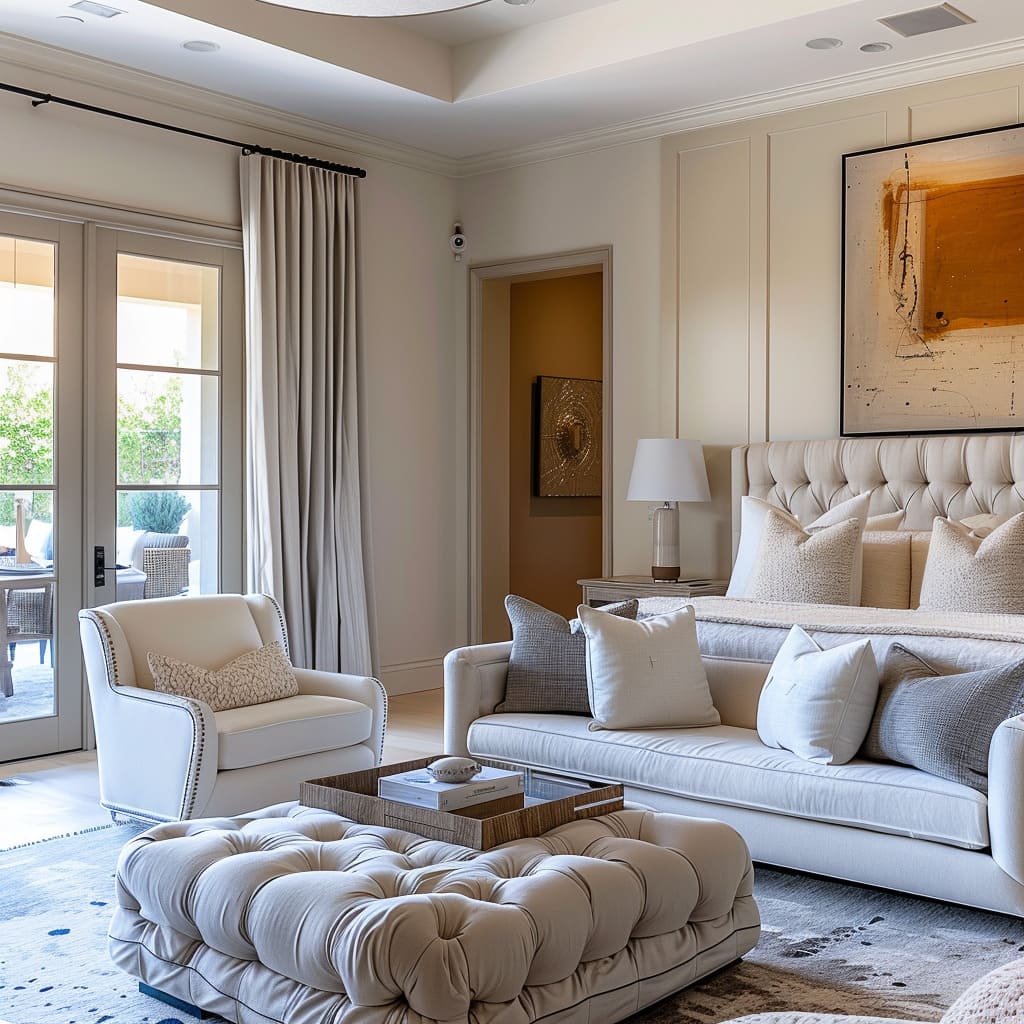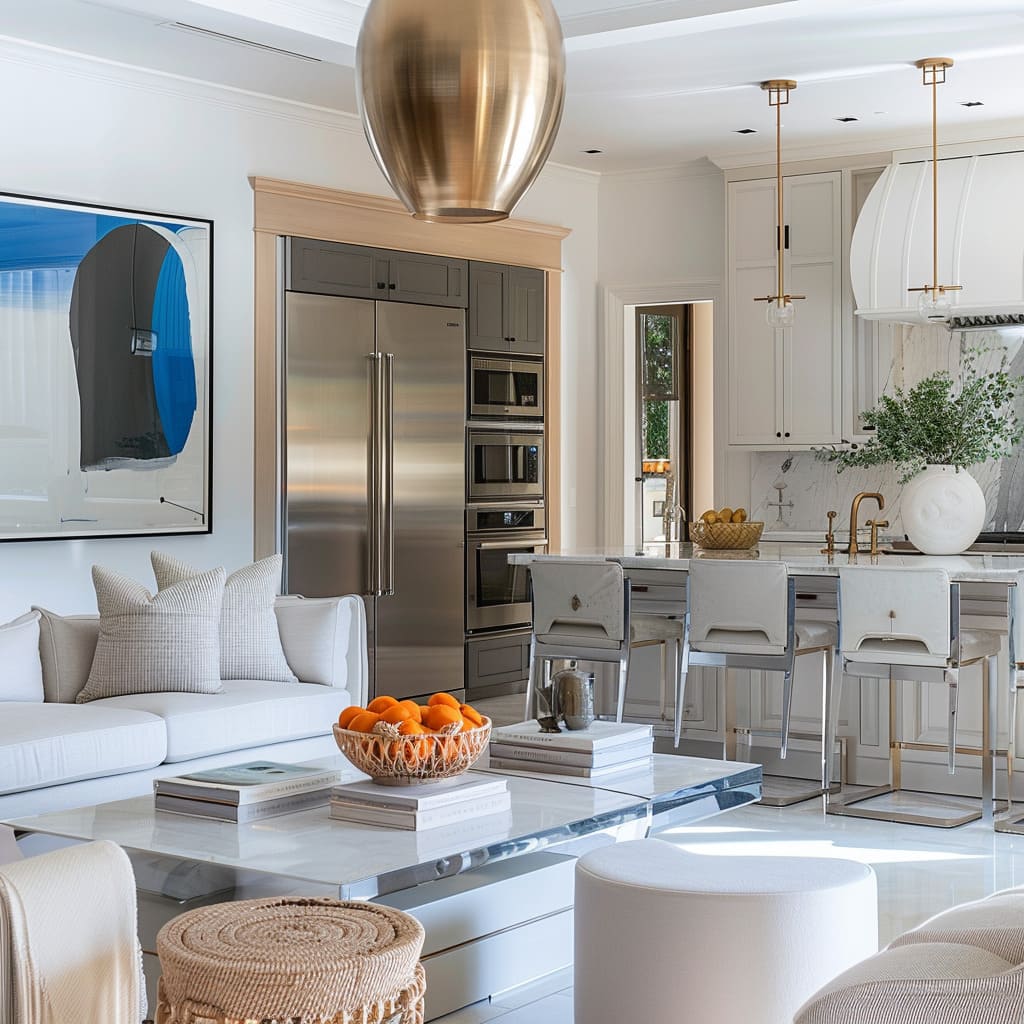When one thinks of modern home design, images of spacious rooms bathed in natural light, adorned with sleek furniture, and echoing a serene minimalism often come to mind. This design ethos centers around the idea of simplicity, clean lines, and a neutral color palette.
The intent is not only to create an aesthetic appeal but also to cultivate a sense of calm and order within the living space. A well-conceived modern design plan seamlessly balances aesthetics with functionality, ensuring that each element serves a purpose while contributing to the overall visual narrative of the home.
The core of modern aesthetics is the creation of a modern vibe that is at once striking and subtle. Natural light plays a pivotal role, bringing to life the colors and textures of the room.
It highlights the spaciousness of open floor plans, where each area flows into the next without the interruption of unnecessary walls or dividers. Minimalist decor echoes the theme of ‘less is more,’ where the presence of fewer but carefully chosen pieces speaks volumes.
The materials used in modern design—metal, glass, and wood—add different textures and sheens, contributing to a layered sophistication that characterizes this style.
A neutral color palette lays the foundation of modern design, imparting a fresh, clean backdrop that is timeless. Such a palette offers flexibility, allowing for bold accents to be introduced through artwork or statement pieces that can easily be changed as trends evolve.
When it comes to materials, natural wood, stone, and luxurious textiles add warmth and depth, preventing the space from feeling stark or cold. These materials also bring a piece of the outside world into the home, promoting a connection with nature that is often lost in urban living.
In modern design, the arrangement of furniture is crucial to maintaining the balance between form and function. The positioning should allow for easy movement, with pieces arranged to maximize space and create a sense of flow.
Furniture with clean lines and low profiles can make the rooms appear larger and more open. Multifunctional furniture pieces play a dual role in offering utility while keeping clutter at bay, a necessity in maintaining the minimalist ethos of modern design.
Embracing modern design doesn’t mean you have to sacrifice your budget. It’s about setting realistic financial parameters from the outset and being disciplined to stay within those limits.
Knowing where to invest more can lead to long-term satisfaction, while identifying where to economize can help stretch your budget without compromising on style. The key is to prioritize costs based on the impact each element will have on the overall design.
High-quality decor and fabrics do not always have to come with a high price tag. There are numerous ways to find affordable options that still offer quality and style.
Exploring outlets, discount stores, and online marketplaces can yield hidden gems that bring character to your home. Incorporating texture and patterns can add layers of depth and intrigue to your spaces, and doing so thoughtfully can prevent overspending on trendy items that may quickly go out of style.
DIY projects provide an excellent opportunity to add a personalized touch to your modern home. These can range from simple paint updates to more involved woodworking projects, depending on your skills and interests.
DIY allows for customization that no store-bought piece can offer and often at a fraction of the cost. Simple projects like creating custom shelving or refinishing a vintage chair can have a significant impact and imbue your space with personal flair.
Lighting is a powerful tool in modern home design. It goes beyond functionality; it’s about setting the right mood, highlighting architectural features, and creating an ambiance.
Smart, energy-efficient lighting solutions can adapt to different times of the day and different needs, while also conserving energy. Strategically placed lamps, dimmable fixtures, and LED accents can transform the atmosphere of a room with the flick of a switch.
Accessorizing your modern home does not have to break the bank. Items you already own can be repurposed, or you can scour thrift stores and flea markets for unique finds.
The addition of art, whether it’s a framed poster or a canvas painted by a local artist, plants that bring life and color, or a stack of vintage books, can all add personality to a space. These elements allow for flexibility and change, which means you can update the look of your home without a complete redesign.
Creating a balanced modern home involves blending high-end items with more budget-conscious pieces. This approach ensures that the overall design remains stylish and cohesive while allowing for flexibility in spending.
Investing in a few high-quality, timeless pieces can set the tone for the room, while less expensive items can be replaced or updated as needed. Incorporating thrifted and antique items into your home can lend a distinctive character to the modern aesthetic, creating a fusion where old meets new.
This practice not only recycles and reuses, reducing the environmental impact but also provides a story and history to your living spaces. Tips for integrating these items include choosing pieces with structural integrity and timeless design, and restoring them with modern finishes or upholstery that complements a contemporary color scheme.
Technology is no longer an afterthought in modern home design; it is an integral component that, when used wisely, can enhance both the aesthetic and functionality of a space. Smart home devices such as thermostats, lighting, and security systems offer convenience and efficiency.
The trick is to integrate these elements so that they blend seamlessly with your decor. This might mean selecting devices with a sleek design or using furniture and built-ins to cleverly conceal wires and hardware.
Refreshing your home for the changing seasons does not necessitate an extensive or expensive overhaul. Simple changes like switching out throw pillow covers, draperies, or area rugs can have a profound impact on the feel of a room.
Embracing versatile pieces that can adapt to any season — like a neutral sofa or classic dining table — provides a constant base upon which seasonal accents can shine, offering an ever-evolving space that always feels fresh and current. Artwork is a vital ingredient in the modern home, bringing color, texture, and personal expression to walls that might otherwise be left bare.
When selecting art, look for pieces that reflect the room’s color palette and mood. The art need not be expensive; local art fairs, online marketplaces, and even your own creations can provide meaningful and affordable options.
A well-chosen piece of art can act as a focal point and spark conversation, imbuing your home with a sense of culture and sophistication.
Modern design principles shine in the context of small spaces, where every inch counts. Opting for multifunctional furniture that can double as storage, like ottomans with hidden compartments or beds with built-in drawers, maximizes utility without sacrificing style.
Wall-mounted desks and shelves take advantage of vertical space and keep the floor clear, contributing to a sense of openness. With clever planning, even the coziest apartment can embody the chic, airy feel of modern design.
Flooring sets the stage for any interior design scheme and modern design favors options that are both stylish and practical. Materials like polished concrete, bamboo, and laminate can mimic the look of more expensive materials at a fraction of the cost.
Besides their aesthetic appeal, these options are valued for their durability and ease of maintenance, ensuring that the foundation of your home’s design is both enduring and economically savvy.
To achieve a cohesive modern design throughout your home, continuity is key. This might mean repeating certain elements like a color scheme or flooring material in each room.
The use of transitional spaces, such as hallways adorned with the same artwork style or a consistent profile in molding and trim, can also help to create a seamless transition from one space to another. It’s these thoughtful touches that contribute to a harmonious overall design.
Eclectic modern design is the artful blending of different styles against a backdrop of modern aesthetics. It’s about striking the right balance — pairing the sleek lines of modern furniture with the ornate detail of a vintage rug, or combining contemporary art with rustic wood textures.
The result is a rich, dynamic interior that respects modern sensibilities while celebrating individual taste.
Sometimes, all it takes is a few key pieces to elevate a modern design to a realm of bespoke elegance. Limited edition items or designer pieces can serve as this anchor, drawing the eye and making a statement.
The secret lies in restraint; allowing these standout items to shine against a more subdued background. Affordable statement pieces can often be found at sample sales, through online auctions, or as part of collaborative collections from high-end designers.
Sustainability is not just a trend but a responsibility in modern design. Incorporating eco-friendly materials, like reclaimed wood or recycled metal, not only supports the environment but also adds a layer of depth and story to your home.
Practices like using low-VOC paints and opting for LED lighting contribute to a healthier indoor climate while reducing your carbon footprint. In modern design, beauty comes not just from what you see, but also from the ethical choices that support it.
Choosing the right textiles and upholstery is crucial in complementing the modern decor without overwhelming it. The key is to look for fabrics that offer texture and comfort while fitting into the color scheme and style of the room.
Mixing and matching different fabrics can add interest; for instance, pairing a smooth leather sofa with textured cushions can create a layered look. However, it’s important to maintain a balance so that the space feels cohesive and not chaotic.
When in doubt, choosing varying shades of the same color can create a sophisticated and understated look. Modern design harmonizes beautifully with elements from the great outdoors.
Incorporating plants, whether as small desktop greeneries or large indoor trees, can transform the ambiance of a space. Water features like tabletop fountains can offer a calming presence and improve indoor air quality.
Utilizing natural materials such as stone, bamboo, or wood can evoke the tranquility of nature inside the home. This concept, known as biophilic design, not only improves the aesthetic of a space but has been shown to enhance well-being and mood.
Everyone loves a good deal, especially when it comes to home decor. Timing is everything; shopping post-holiday sales, end-of-season clearances, and Black Friday events can lead to significant savings.
Signing up for newsletters and following your favorite stores on social media can give you early access to sales and exclusive discounts. When navigating sales, it’s essential to stick to your design plan to avoid impulse buys that don’t fit your vision.
Minimalism is more than just an aesthetic; it’s a lifestyle choice that aligns perfectly with modern home design. The minimalist approach is about reducing clutter and focusing on the essentials, creating a space that is both functional and calming.
Selecting pieces that serve multiple purposes or that have a strong but simple visual appeal can help maintain a clean and open environment. Remember, in a minimalist space, every item should serve a purpose or bring joy.
Window treatments in modern homes should strike a balance between form and function. They need to control light and provide privacy while maintaining clean lines.
Materials like linen, canvas, or even metal can offer a crisp, modern look. Motorized blinds or shades can be a sleek and practical choice, eliminating the need for cords.
Sheer fabrics can diffuse light beautifully, while heavier drapes can be used for a more dramatic effect. Effective space planning is a cornerstone of modern home design.
It involves understanding how you’ll use each room and arranging the elements to serve those functions without sacrificing style. A well-planned space has a natural flow that makes daily activities effortless.
Drawing up a floor plan before making any furniture purchases can help visualize the space and ensure that everything fits perfectly and serves its intended purpose.
While modern design is characterized by clean lines and neutral colors, there’s always room for personal expression. Displaying personal collections, artwork, or photographs can add warmth and tell your unique story.
The key is to find a balance; too many personal items can create clutter, but the right amount can make a home feel like an extension of oneself. Curate your displays to rotate your most treasured items and keep the space fresh and engaging.
Textures play a significant role in modern design, adding depth and warmth to what might otherwise be a stark space. The combination of various textures — such as a shaggy rug paired with a smooth leather couch or glossy ceramics juxtaposed with matte metals — creates a sensory experience that can make a room feel inviting.
When mixing textures, consider how they will interact with both the natural and artificial light in the room to create the desired atmosphere.
One of the most cost-effective ways to transform a space is with a fresh coat of paint. This simple update can completely change the feel of a room, making it brighter, larger, or more cozy depending on the chosen hue.
When selecting paint colors for a modern design, look for shades that complement the room’s natural lighting and the colors of your furniture and decor. Opting for satin or semi-gloss finishes can help reflect light and add a subtle vibrancy to the space.
When diving into the world of modern design, it’s wise to plan for the future. Selecting timeless pieces and layouts can save money and effort over time by minimizing the need for frequent updates.
The concept of timeless modern involves choosing designs that have stood the test of time—think mid-century modern furniture or Scandinavian simplicity. These styles have proven their longevity and continue to be celebrated for their elegant simplicity.
Online marketplaces can be treasure troves for the savvy decorator. They offer a vast selection of second-hand items that can add character to your space without the new price tag.
When shopping these platforms, be sure to ask detailed questions about the condition of the items and don’t be afraid to negotiate prices. Always check for quality and authenticity, especially when dealing with supposed designer pieces.
Layering rugs is a design trick that adds texture, color, and warmth to a room. To master this technique in modern spaces, mix rugs of varying sizes, textures, and patterns that complement each other.
This strategy not only adds depth to your floors but also helps to define different areas within an open space, such as a seating area or dining nook. Symmetry and asymmetry are both powerful design tools in modern home decor.
Symmetry can convey a sense of order and formality, while asymmetry can add interest and dynamic movement to a space. In practice, this could mean symmetrically arranging chairs around a fireplace or offsetting art on a wall for a more contemporary look.
The key is to decide which approach best suits the room’s function and your personal style.
Above all, designing your home should be an enjoyable process. It’s an opportunity to express your personality and create a space that truly feels like your own.
Remember, great design isn’t defined by how much you spend. It’s about the love, creativity, and thought you invest.
Take your time to find pieces that speak to you, play with layouts until they feel just right, and don’t be afraid to make mistakes along the way. After all, a home is always a work in progress, reflecting the evolution of those who live there.
